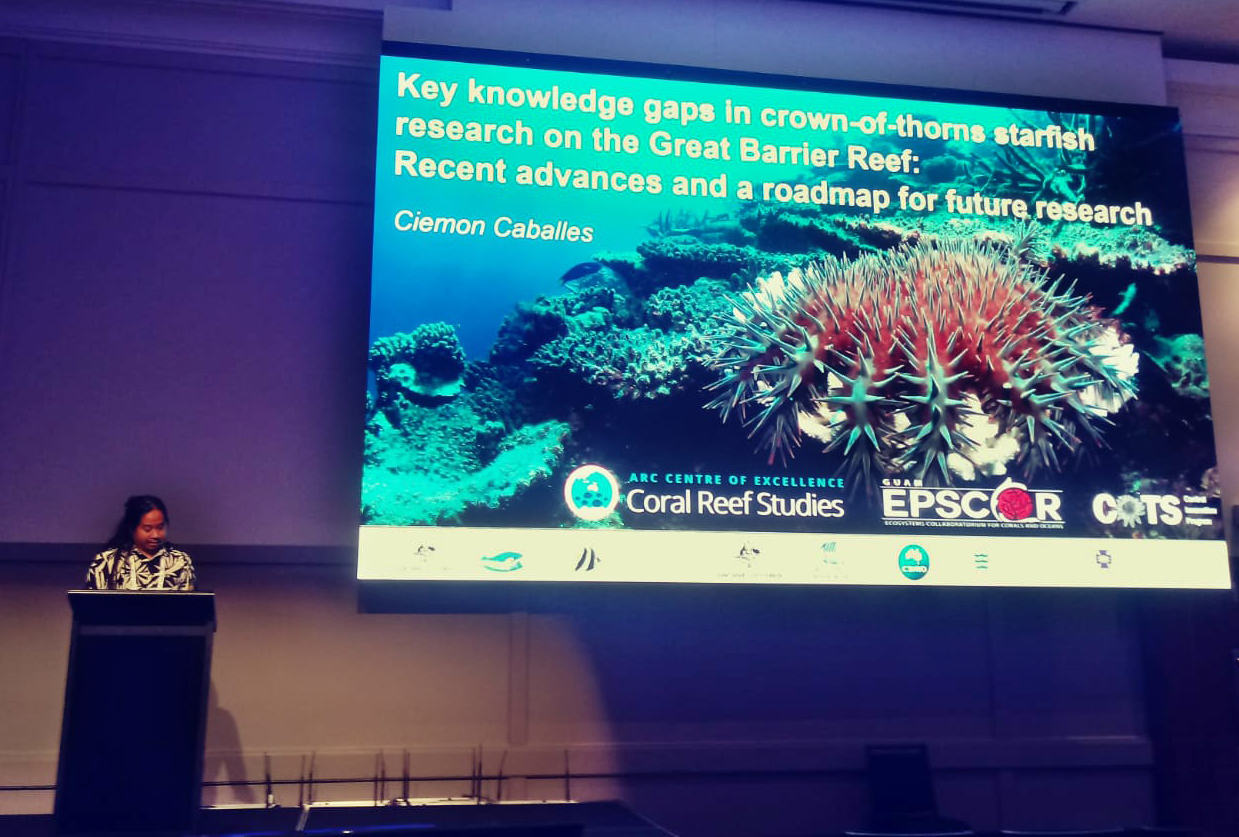

As part of his keynote address for the “The Biology, Ecology, and Management of Marine Nuisance Species” symposium at the 58th Annual Conference of the Australian Marine Sciences Association (AMSA), UOG Senior Research Associate Ciemon Caballes talked about key knowledge gaps in crown-of-thorns starfish (COTS) research as well as recent advances the field of study has achieved.
The event was held from August 7 to August 11, 2022, in Cairns, Australia, and was the biggest AMSA conference in history. It was also the first face-to-face AMSA meeting since 2019.
Caballes is an executive committee member of the North Queensland Branch of the Australian Marine Sciences Association and was also part of the organizing committee for this conference. As part of his work funded by the University of Guam’s National Science Foundation EPSCoR grant, his research focuses on ecophysiology as well as echinoderm and coral ecology.
Crown-of-thorns starfish are marine invertebrates that feed on coral and occur naturally on reefs throughout the Indo-Pacific region. These starfish are one of the largest and most efficient coral predators, and when conditions are right and if left unchecked, outbreaks of crown-of-thorns starfish can devastate hard coral communities.
Caballes’ presentation was based on a study in which 38 expert participants proposed research questions regarding areas such as the feeding ecology of COTS, predation, settlement, and environmental change. According to Caballes, this research is based in the Great Barrier Reef, but is applicable to everywhere there is COTS.
“It is basically a roadmap for future research and what the recent advances are regarding crown-of-thorns-starfish,” said Caballes.
Advances in crown-of-thorn starfish research include new survey methods which can cover large areas of reef and allow divers to find hidden starfish that would not have been found before using conventional survey methods.
Another novel survey method involves taking water samples to detect DNA shed by COTS and larval traps to determine where and when these starfish are settling onto the reef after their planktonic larval stage.
“It’s very important to study crown-of-thorns starfish especially here in Guam because we’ve been getting COTS outbreaks ever since they were first observed in the late ‘60s,” said Caballes. During this time, massive outbreaks of COTS on Guam killed over 90 percent of the corals from Tumon to Double Reef.”
Recent surveys have also identified hotspots of high COTS densities with associated coral mortality around Guam.

